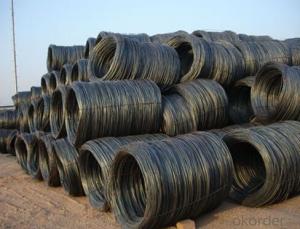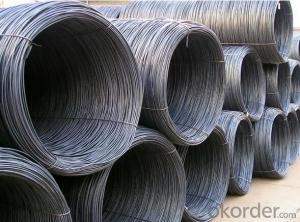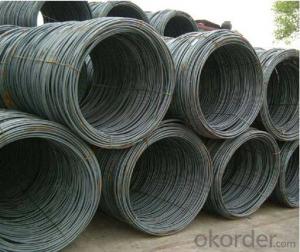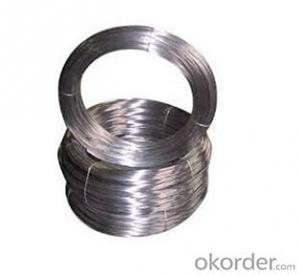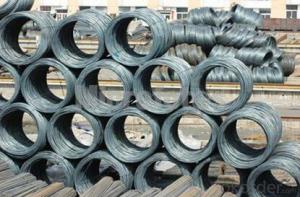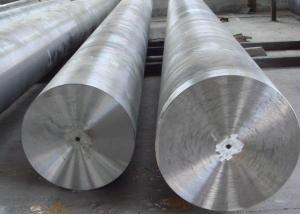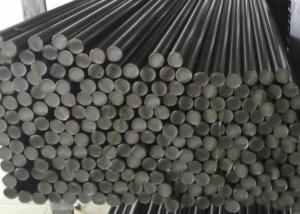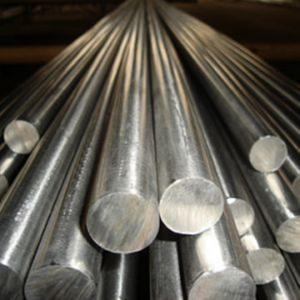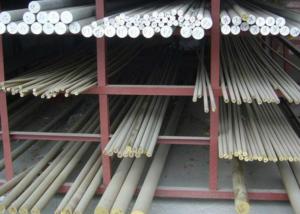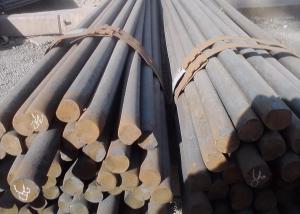m.s Wire Rod in Coils 5.5mm/6.5mm/8mm/10mm/12mm/16mm
- Loading Port:
- Tianjin
- Payment Terms:
- TT OR LC
- Min Order Qty:
- 10 m.t.
- Supply Capability:
- 10000 m.t./month
OKorder Service Pledge
OKorder Financial Service
You Might Also Like
Item specifice
m.s Wire Rod in Coils 5.5mm/6.5mm/8mm/10mm/12mm/16mm
Details of the m.s Wire Rod in Coils 5.5mm/6.5mm/8mm/10mm/12mm/16mm
| Steel Grade | Q195-Q235,Q235,SAE 1008-1018 Hot Rolled Steel Wire Rod |
| Diameter | 5.5, 6.5, 7,8, 9,10, 12,14mm.etc. |
| Coil weight | 2m.t. |
| Application | drawing, construction materials, machinery parts,construction for Houses, Bridges, Roads,Packing |
| Deliver Time | 25-30 days after receipt of L/C or deposit by T/T |
| Packing | In coils, loading in container or by bulk vessel |
| Payment terms | 1).100% irrevocable L/C at sight. |
| 2).30% T/T prepaid and the balance against the copy of B/L. | |
| 3).30% T/T prepaid and the balance against L/C |
| Chemical Composition(%) | ||||||
| C | Mn | Si | S | P | Cr | |
| SAE1006B | 0.03~O.07 | ≤0.32 | ≤0.30 | ≤0.045 | ≤0.040 | 0.3-0.35 |
| Mechanical properties | ||||||
| Yield strength(N/mm2) | Tensile strength(N/mm2) | Elongation(%) | ||||
| 250-280 | 350-380 | ≥32 | ||||
| Grade | Chemical Composition(%) | |||||
| C | Mn | Si | S | P | Cr | |
| SAE1008B | 0.10max | 0.3~O.50 | 0.15max | 0.050max | 0.040 max | 0.3-0.35 |
| Mechanical properties | ||||||
| Yield strength(N/mm2) | Tensile strength(N/mm2) | Elongation(%) | ||||
| ≥195 | 315-430 | ≥30 | ||||
Supplier of the m.s Wire Rod in Coils 5.5mm/6.5mm/8mm/10mm/12mm/16mm
CNBM International Corporation is the most import and export platform of CNBM group(China National Building Material Group Corporation) ,which is a state-owned enterprise, ranked in 270th of Fortune Global 500 in 2015.
With its advantages, CNBM International are mainly concentrate on Cement, Glass, Iron and Steel, Ceramics industries and devotes herself for supplying high quality series of refractories as well as technical consultancies and logistics solution.
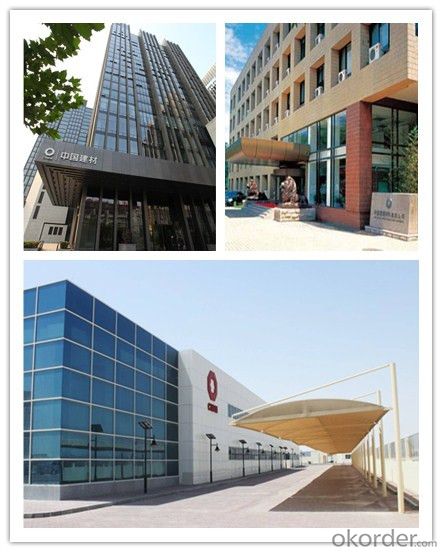
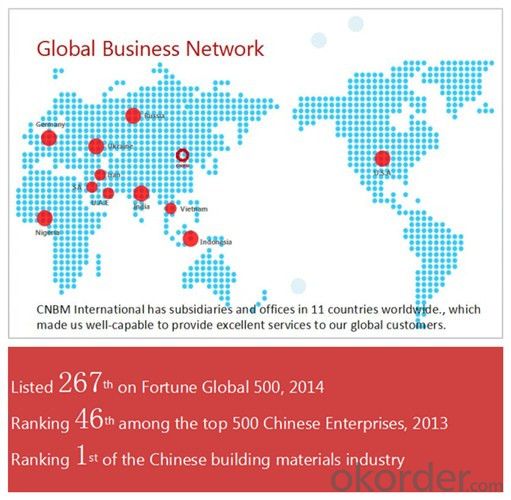
Delivery of the m.s Wire Rod in Coils 5.5mm/6.5mm/8mm/10mm/12mm/16mm
Packaging Detail | Sea worthy packing /as per customer's packing instruction |
Delivery Detail | 15 ~ 40 days after receiving the deposit |
Products Show
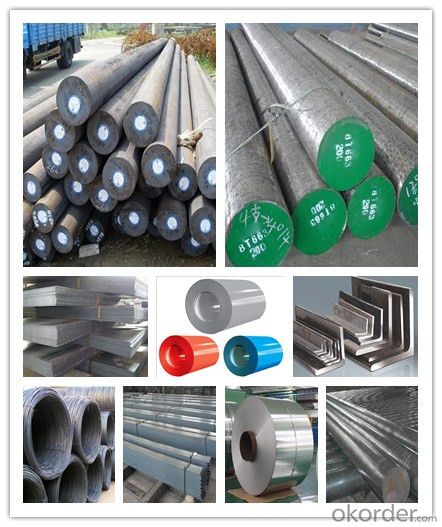
FAQ:
Are you a trading company or manufacturer? | Manufacturer |
What’s the MOQ? | 3 metric ton |
What’s your delivery time? | 15-35 days after downpayment received |
Do you Accept OEM service? | Yes |
what’s your delivery terms? | FOB/CFR/CIF |
What's the Payment Terms? | 30% as deposit,70% before shipment by T/T |
Western Union acceptable for small amount. | |
L/C acceptable for large amount. | |
Scrow ,Paybal,Alipay are also ok | |
Why choose us? | Chose happens because of quality, then price, We can give you both. Additionally, we can also offer professional products inquiry, products knowledge train (for agents), smooth goods delivery, excellent customer solution proposals. |
What's your available port of Shipment? | Main Port, China |
What’s your featured services? | Our service formula: good quality+ good price+ good service=customer's trust
|
Where are your Market? | Covering more than 160 countries in the world |
- Q:How does high-speed steel perform in high-temperature cutting operations?
- High-speed steel performs well in high-temperature cutting operations due to its exceptional heat resistance and ability to retain hardness at elevated temperatures. This enables it to maintain its cutting efficiency, withstand thermal stress, and resist deformation, resulting in improved tool life and productivity.
- Q:What are the different forms of special steel?
- There are several different forms of special steel, including stainless steel, tool steel, high-speed steel, alloy steel, and spring steel. Each form has unique properties and is designed for specific applications in various industries.
- Q:How does special steel perform in dynamic loading conditions?
- Special steel performs exceptionally well in dynamic loading conditions. It has high strength, toughness, and fatigue resistance, making it capable of withstanding repeated loading and impacts without failure. Its ability to absorb and distribute stress evenly helps prevent cracks and fractures, ensuring the structural integrity of components even under demanding, dynamic loading conditions.
- Q:What are the different methods of testing special steel for quality assurance?
- There are several methods commonly used for testing special steel to ensure quality assurance. These methods include: 1. Chemical Analysis: This involves determining the composition of the steel by analyzing its chemical elements and their respective quantities. This helps to ensure that the steel meets the specified requirements and is free from any impurities. 2. Mechanical Testing: Mechanical testing assesses the strength, hardness, and other mechanical properties of the steel. Tensile tests, hardness tests, impact tests, and fatigue tests are some of the common mechanical tests performed on special steel. These tests help to evaluate the steel's performance under different conditions and ensure it meets the required standards. 3. Non-Destructive Testing (NDT): NDT techniques are used to detect any surface or internal defects in the steel without causing any damage. Magnetic particle testing, ultrasonic testing, radiographic testing, and dye penetrant testing are commonly employed methods for NDT. These tests are crucial in identifying any flaws that may compromise the steel's structural integrity. 4. Metallurgical Analysis: Metallurgical analysis involves the microscopic examination of the steel's microstructure to assess its quality. This analysis helps to identify any grain size variations, inclusions, or phase transformations that might affect the steel's performance. Metallography, optical microscopy, and electron microscopy are commonly used techniques for metallurgical analysis. 5. Corrosion Testing: Special steel is often exposed to harsh environments, making corrosion resistance a critical quality parameter. Corrosion testing evaluates the steel's resistance to corrosion in various conditions. Salt spray testing, electrochemical testing, and exposure to corrosive environments are some methods used for corrosion testing. 6. Dimensional Inspection: Dimensional inspection ensures that the special steel meets the specified dimensional requirements. This involves measuring the steel's dimensions, including length, width, thickness, and other critical dimensions, using calibrated instruments. By employing these various methods, manufacturers can thoroughly test special steel and ensure that it meets the required quality standards. This comprehensive testing helps to guarantee the performance, durability, and reliability of the steel in various applications.
- Q:How is high-temperature alloy steel used in the production of heat exchangers?
- High-temperature alloy steel is used in the production of heat exchangers due to its exceptional resistance to high temperatures and corrosion. It allows heat exchangers to efficiently transfer heat between two fluids while maintaining structural integrity. The alloy steel's properties, such as high strength and thermal stability, ensure long-lasting performance and reliability in demanding industrial processes.
- Q:How is die steel used in metal stamping processes?
- Die steel is used in metal stamping processes as it provides the necessary hardness, durability, and wear resistance required to shape and form metal sheets or components. Die steel dies are used as molds or templates, which are pressed onto the metal to cut, bend, or shape it into the desired form. The high strength and toughness of die steel enable it to withstand the extreme pressures and repetitive impacts of the stamping process, ensuring precise and consistent results.
- Q:What are the different methods for quenching special steel?
- Quenching is a critical step in the heat treatment process of special steel, as it helps to achieve the desired mechanical properties and improve the material's hardness and strength. There are several methods for quenching special steel, each with its own advantages and considerations. 1. Oil Quenching: This is one of the most commonly used methods for quenching special steel. The steel component is immersed in oil, which acts as a cooling medium. Oil quenching provides a moderate rate of cooling, allowing for controlled and uniform hardening. It is suitable for a wide range of steel grades and can prevent cracking or distortion. 2. Water Quenching: Water quenching is a faster cooling method compared to oil quenching. It provides rapid heat extraction, resulting in higher hardness and strength. However, the high cooling rate can also lead to increased risk of cracking or distortion, especially with thicker sections. Water quenching is commonly used for low-alloy steels and some high-alloy steels. 3. Polymer Quenching: Polymer quenching involves using a specialized polymer solution as the cooling medium. This method provides a controlled cooling rate, offering a balance between the slower oil quenching and faster water quenching. Polymer quenching can be particularly suitable for steels with complex shapes or critical dimensions, as it reduces the risk of distortion and cracking. 4. Air Quenching: Air quenching is a slower cooling method that involves allowing the steel component to cool in ambient air. It is typically used for steels with lower hardenability, as it provides a more gradual cooling rate. Air quenching can help to reduce the risk of distortion and cracking, but it may result in lower hardness and strength compared to other quenching methods. 5. Salt Bath Quenching: Salt bath quenching involves immersing the steel component in a molten salt bath as the cooling medium. This method provides a controlled and uniform cooling rate, reducing the risk of distortion and cracking. Salt bath quenching is particularly suitable for complex-shaped or delicate parts, as it minimizes the thermal stress during cooling. It is important to note that the choice of quenching method depends on various factors, such as the steel grade, desired hardness, component size and shape, and the required mechanical properties. Proper selection and implementation of the quenching method are crucial to achieving the desired material characteristics and ensuring the overall quality of the special steel product.
- Q:How is structural steel used in building construction?
- Structural steel is a crucial material in building construction as it provides strength, durability, and flexibility to the overall structure. It is used to create the framework or skeleton of a building, including beams, columns, and trusses. These steel components support the weight of the building and distribute it evenly, ensuring stability and safety. Additionally, structural steel can be easily fabricated and assembled on-site, making it a cost-effective and efficient solution for various types of construction projects.
- Q:How does special steel contribute to improving product efficiency in energy-intensive processes?
- Special steel plays a crucial role in enhancing product efficiency in energy-intensive processes by offering superior strength, durability, and heat resistance. It allows for the design and construction of lighter, more compact equipment, reducing energy consumption and improving overall efficiency. Additionally, special steel's corrosion resistance properties help extend the lifespan of machinery, minimizing downtime and maintenance costs. Its use in energy-intensive processes enables better performance, optimized resource utilization, and ultimately contributes to a greener and more sustainable industrial landscape.
1. Manufacturer Overview |
|
|---|---|
| Location | |
| Year Established | |
| Annual Output Value | |
| Main Markets | |
| Company Certifications | |
2. Manufacturer Certificates |
|
|---|---|
| a) Certification Name | |
| Range | |
| Reference | |
| Validity Period | |
3. Manufacturer Capability |
|
|---|---|
| a)Trade Capacity | |
| Nearest Port | |
| Export Percentage | |
| No.of Employees in Trade Department | |
| Language Spoken: | |
| b)Factory Information | |
| Factory Size: | |
| No. of Production Lines | |
| Contract Manufacturing | |
| Product Price Range | |
Send your message to us
m.s Wire Rod in Coils 5.5mm/6.5mm/8mm/10mm/12mm/16mm
- Loading Port:
- Tianjin
- Payment Terms:
- TT OR LC
- Min Order Qty:
- 10 m.t.
- Supply Capability:
- 10000 m.t./month
OKorder Service Pledge
OKorder Financial Service
Similar products
New products
Hot products
Related keywords
